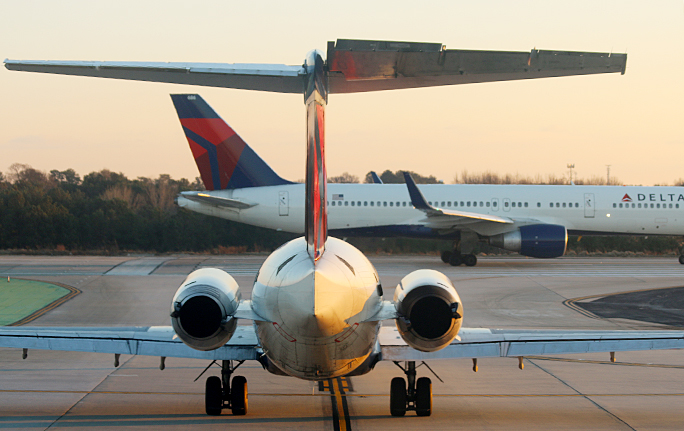“I f you visit the corporate headquarters of Delta Air Lines, you will see the primary objectives of different departments listed on posters on the walls. One of them is to rank number one in the J.D. Power Airline Satisfaction Ratings, of which the 2015 rankings should be released within the next couple of months. Delta Air Lines ranked number two overall in 2014 — bested only by Alaska Airlines, which was never even mentioned at the Freddie Awards.”
…and twelve days after I wrote this article pertaining to Delta Air Lines not winning anything at the 2015 Freddie Awards at the Delta Flight Museum in Atlanta which contains the quote shown above, both the 2015 North America Airline Satisfaction Study and the 2015 Airline Loyalty/Rewards Program Satisfaction Report were released today from J.D. Power and Associates.
The One Thing Delta Air Lines Has Not Been Able to Do — Yet
Recently, the 2016 North America Airline Satisfaction Study and the 2016 Airline Loyalty/Rewards Program Satisfaction Report were released today from J.D. Power and Associates; and as happened last year and years prior, Delta Air Lines was number two again this year for the North America Airline Satisfaction Study.
In fact, Delta Air Lines has never ranked highest in the study, according to a spokesperson of J.D. Power and Associates. “Alaska Airlines ranks highest in the traditional carrier segment since 2008”, he told me. “Delta was below industry average in 2000 and ranked third in the segment in 2005 and second in the segment in 2006, 2007. The study was not conducted from 2001-2004.”
The North America Airline Satisfaction Study measures passenger satisfaction with airline carriers in North America based on performance in seven factors in order of importance — and overall satisfaction among passengers who select an airline because of its reputation or customer service based on a scale of 1,000 points:
- Cost and fees
- In-flight services
- Boarding/deplaning/baggage
- Flight crew
- Aircraft
- Check-in
- Reservation

Apparently, Alaska Airlines does indeed go “beyond” for its customers, as it is the clear winner in 2016 and won the top spot for the ninth consecutive year.
Ratings of Low-Cost Carriers
Low-cost carriers are rated in a separate chart of their own; and JetBlue Airways wound up taking the top honors again in 2016 for the eleventh consecutive year — but Southwest Airlines practically tied JetBlue Airways this year, missing by only one single point.

Ultra-low-cost carriers — such as Spirit Airlines and Allegiant Air — are typically not a part of the low-cost carrier ranking as rated by J.D. Power and Associates.
Airline Loyalty and Rewards Program Satisfaction
It is important to note that the 2016 Airline Loyalty/Rewards Program Satisfaction Report is only in its third year; and it measures customer satisfaction on a scale of 1,000 points with airline frequent flier loyalty and rewards programs based on six factors in order of importance:
- Ease of redeeming points/miles
- Reward program terms
- Account maintenance/management
- Ease of earning points/miles
- Variety of benefits available
- Customer service

Alaska Airlines once again won the top spot in this report as well with its Mileage Plan frequent flier loyalty program, completing a “sweep” of sorts.
Last year, the SkyMiles program would have ranked last in the Airline Loyalty/Rewards Program Satisfaction Report if it were not for US Airways Dividend Miles. Although the SkyMiles program of Delta Air Lines increased in ranking by one slot from last year — surpassing both the AAdvantage program of American Airlines and MileagePlus program of United Airlines — it still ranks significantly lower in customer satisfaction than the frequent flier loyalty programs of Alaska Airlines, Southwest Airlines and JetBlue Airways.
Summary
Overall satisfaction with the industry improved from 717 to 726 on the scale of 1,000 points — which is the best score since J.D. Power and Associates started using its current methodology for ranking airlines in 2006 — with traditional carriers showing somewhat more improvement than low-cost carriers. Airlines did rather well in the 2016 version of the study — but does that really mean that airline satisfaction grows as travelers accept extra fees as their fate as implied by Brittany Jones-Cooper, who wrote this article for Yahoo! Finance? The same article claims that customer complaints increased by 37 percent.
One reason customers of airlines are happier overall is because airfares are the lowest cost in five years, thanks to lower prices for jet fuel.
The charging of ancillary fees for unbundled products and services would be fine with me as long as they are clearly conveyed to the customer and if they decreased the overall cost of flights without the addition of restrictions to base airfares — but I have always suspected that the latter part of that statement was not the case. Regardless, people seem to be willing to pay them anyway.
The data from J.D. Power and Associates pertaining to frequent flier loyalty programs suggests to me something I — and many frequent fliers — have thought all along: that legacy carriers still have a long way to go to satisfy their members.
Will they listen — or does that data really not matter in the first place when it pertains to the overall financial picture?
As for Delta Air Lines, perhaps next year will be the year that the airline finally places first in the rankings in the North America Airline Satisfaction Study by J.D. Power and Associates — especially since a colleague of mine stated that Alaska Airlines might be potentially adversely affected by its acquisition of Virgin America earlier this year and that Delta Air Lines may just have its chance.
Do you agree?
Photograph ©2015 by Brian Cohen.

